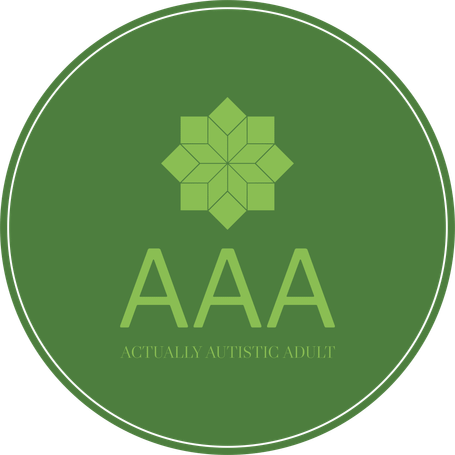Rewriting history - a new take on autism pioneers
Written in November 2022
Autism, as a clinical diagnosis, is generally attributed to three people. Leo Kanner is often credited as the father of autism research, while Hans Asperger's research took a little longer to come to attention in the English speaking world. In 1981 British psychiatrist Lora Wing combined the findings of both men in her 1981 paper Asperger's Syndrome: A Clinical Account, to create the modern idea of the autism spectrum, and this is the view that autism diagnosis, research and awareness has taken since then.
The 1980s and 1990s saw autistic people themselves get involved in research (people like Damian Milton and Wenn Lawson have influenced and contributed greatly to the academic world) and the beginnings of the neurodiversity movement, which empowers neurodivergent people to thrive, and which continues to work for acceptance and awareness.
As with many long-held beliefs, there comes a time when we look back at the history and see whether we're working from the full story or not. In many cases this revisionism reveals the contributions of others, and raises questions about the awareness around their work and why their efforts have gone disregarded.
Spectrum News recently ran a three piece article* delving back into the history of autism research and found four people whose early work influenced the writings of Asperger and Kanner, but who have gone largely (or completely) uncredited until now. It will surprise no-one to find that three of these people were women.
Grunya Sukhareva, Anni Weiss and Sister Viktorine all worked within childhood psychiatric institutions. Sukhareva was one of the most prolific and influential Soviet psychiatrists of her time, publishing over 150 papers, books and monographs on various aspects of child psychiatry. Although she worked in Russia, she wrote and published in German, so it is not a language issue that caused her work to be overlooked. In fact, both Asperger and Kanner cited papers published in the same journal (Monatsschrift für Psychiatrie und Neurologie) as her 1926 and 1927 papers about the autistic children she worked with. Kanner even cited Sukhareva in 1949, so how did these two German speaking psychiatrists overlook some of the most insightful work on autism?
The answer may lie in the fact that Sukhareva was not only female, but Jewish and Russian. Institutional anti-Semitism and anti-Soviet feeling may have influenced their reading (and ignorance) of Sukhareva's work. Additionally, the language in use at that time was not clear. Although “autism” as a term existed in the psychiatric lexicon, it was used to refer to the tendency towards self-absorption and flat affect often seen in cases of schizophrenia (which itself was an area where language was developing and often muddy). In fact, both Sukhareva and Asperger used the term “autistic psychopathy” to describe the syndrome they believed they had observed (although Sukhareva first called it “schizoid psychopathy”). Psychopathy in this use does not mean what we might assume nowadays, but merely “psycho-” meaning mental, and “path” to mean disease. We ought not blame the Ancient Greeks for this.
Anni Weiss and Sister Viktorine both worked at The Heilpedägogik Children's Clinic, one of the first European children's psychiatric clinics. They worked there under Georg Frankl, making detailed clinical observations of autistic children, when Asperger joined the team as a newly qualified doctor in 1932. It is worth noting that Weiss and Frankl both published papers on the same patients as Asperger (and he used their clinical notes to inform his 1944 paper). Weiss published in 1935 and Frankl in 1934, and although Sister Viktorine did not publish, her clinical observations were also instrumental in writing Asperger's influential paper. Both Weiss and Frankl were Jewish, so may have been under-recognised due to the pervasive anti-Semitic attitudes of the time. Both doctors left Austria in the 30s and moved to America where they married, and both worked with Kanner – not exactly a coincidence given they all worked in the same specialist field.
While their collaboration was not a coincidence, it was also not a conspiracy. They all happened to be focusing on the same ideas and, as scientists do, they collaborated and shared ideas. Frankl's observations and idea of “affective contact” in autistic children heavily influenced Kanner's 1944 paper. Today, standards for authorship of scientific papers would include Weiss, Frankl and Viktorine on both Asperger's and Kanner's seminal papers. They would also likely have cited Sukhareva more, perhaps even giving credit to her works as a basis for their own studies.
What is most interesting about Sukhareva's work is that once translated, and the language clarified, she actually paints a picture of the current view of autism as a spectrum condition, and mentions aspects of autism which are completely in line with the diagnostic criteria. Sukhareva, therefore, deserves credit as the person who first observed autism in a clinical setting and who published literature on it.
*Don't take my potted version of David Dobbs' excellent article series as a sufficient account of the history of autism research, go and read them (and an account of researching for the pieces), as well as a further piece on Sukhareva, here: https://www.spectrumnews.org/features/legacy-special-reports/special-report-the-new-history-of-autism/
We need your consent to load the translations
We use a third-party service to translate the website content that may collect data about your activity. Please review the details in the privacy policy and accept the service to view the translations.
